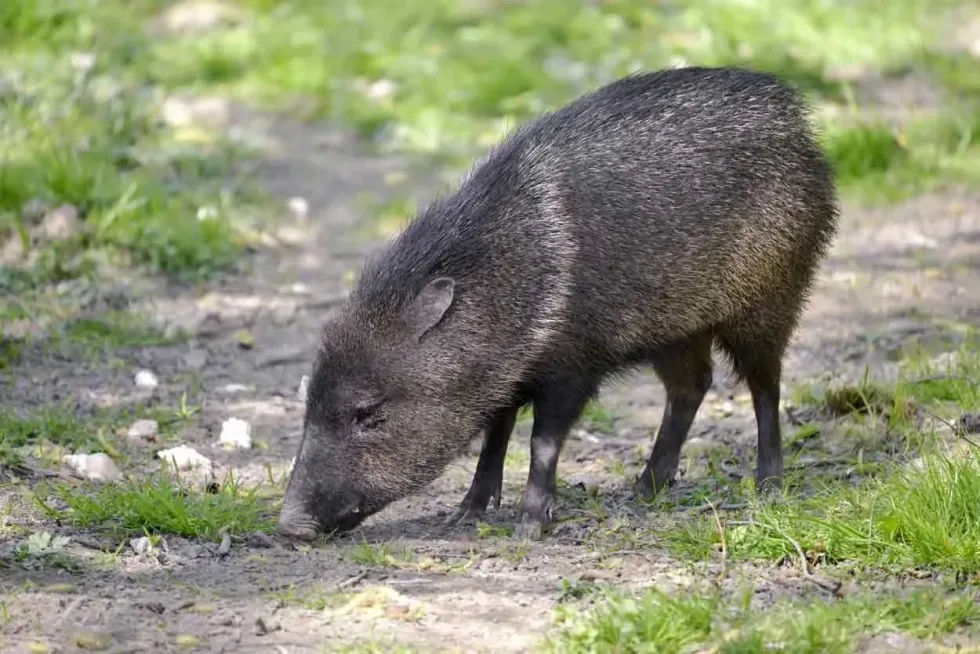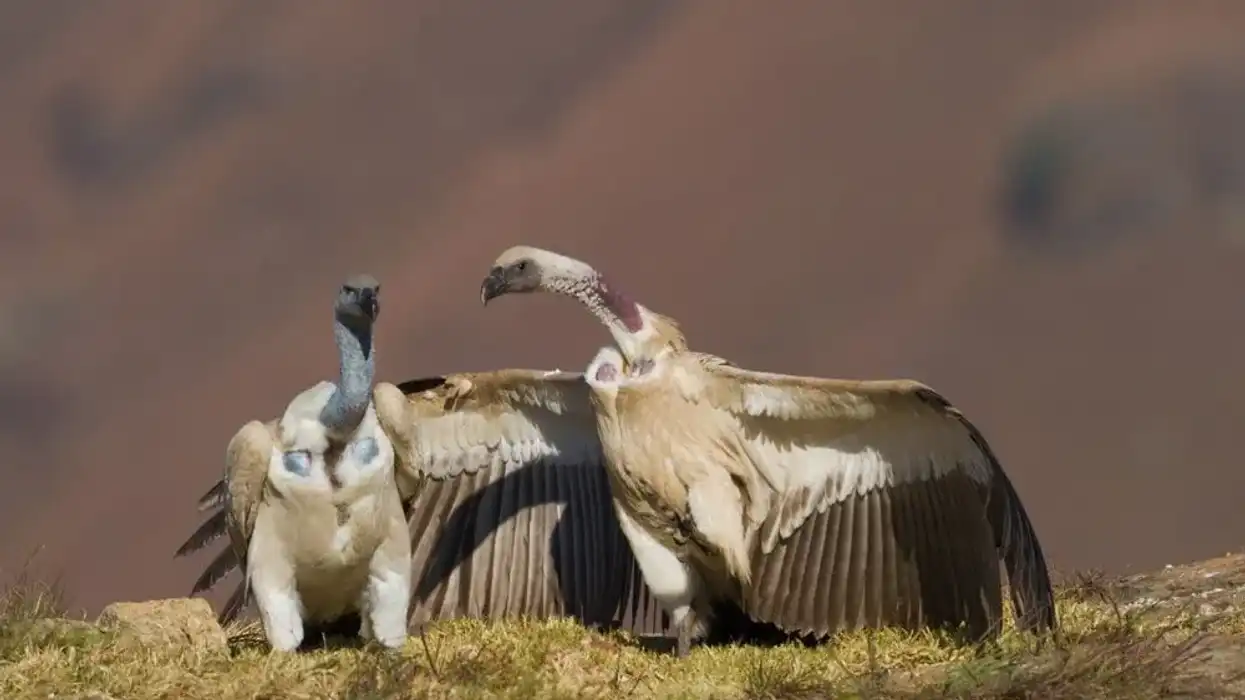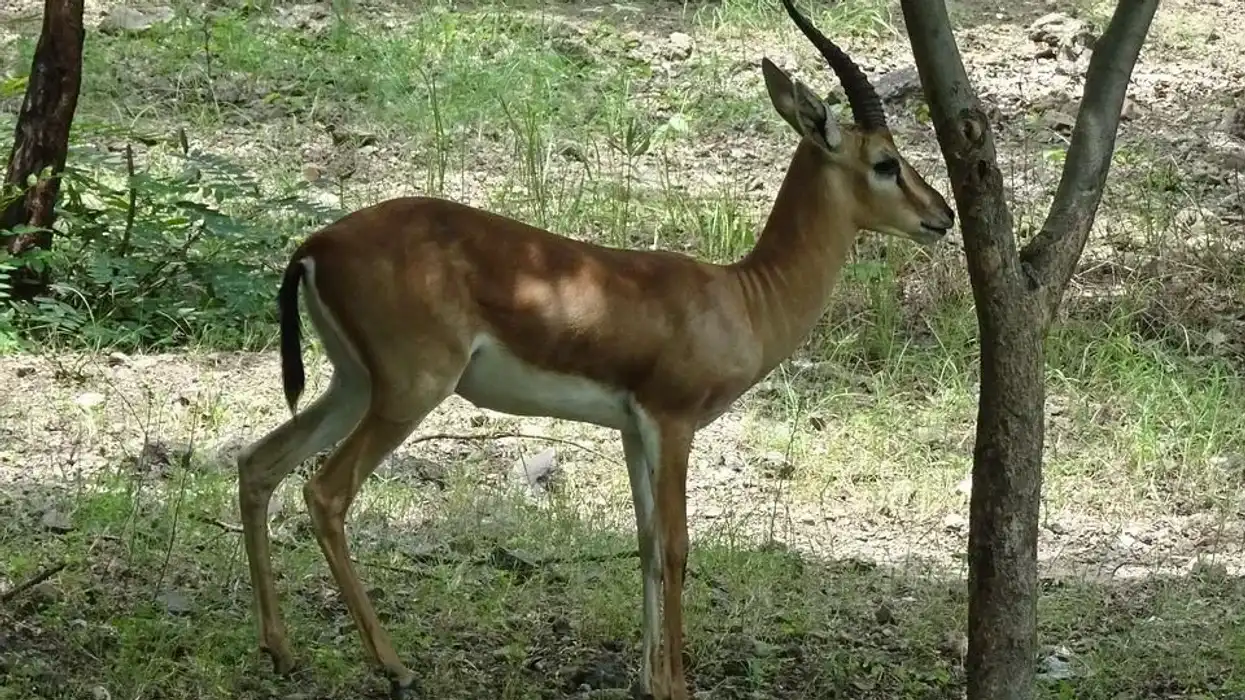The collared Peccary (Pecari tajacu) is an animal that evolved around 30 million years ago in the European region. Their ancestors were pig-like animals, belonging from the phylum Chordata, class Mammalia, and Artiodactyla order. They are no longer classified in the Suidae family.
Eventually, they spread throughout other continents with Australia and Antarctica being an exception. Now they are one of the most common south American range animals.
They have spread across so vastly, people have even started to keep them as pets and breed them commercially as well to generate revenue by exporting their skins. Their main predators are humans, jaguars, pumas, and coyotes.
Collared Peccaries, also known as javelina, are often mistaken for rodents or pigs. Javelina are herbivores. However, in certain situations, their diet includes little insects, lizards, and carrion as well.
To learn more, we have collected a set of interesting facts about them for you to read. You can also learn more about fascinating wildlife by reading up more articles on leopard seals and fennec foxes.
Collared Peccary Interesting Facts
What type of animal is a Collared Peccary?
Usually, it's difficult to distinguish between a wild pig and a javelina with a single look. However, they are not pigs due to certain key differences in stomach and skeleton, nor are they rodents.
What class of animal does a Collared Peccary belong to?
The collared peccaries belong to the class Mammalia. They are the most common mammals found in tropical regions of America.
How many Collared Peccaries are there in the world?
In 1972 it was declared as an extinct species by the science community. In 1975 they were found to be still alive. Their population is 5000+ today.
Where does a Collared Peccary live?
The territory of a collared peccary is vast and full of multiple habitats with different key features. They are native to the European continent.
These days you can spot them on the ranges of North America, South America (Arizona, grasslands of Texas, and Mexico) to the Argentinian range. If it was a couple of decades earlier, you could have spotted them on the islands of Trinidad and Tobago as well. However, they are at near extinction in those areas due to overhunting.
What is a Collared Peccary's habitat?
Collared peccaries are very particular when it comes to their habitat. Peccary species can live in almost every type of habitat. Peccaries live in a variety of habitats like swamplands, deserts, tropical Amazon rainforests, and grasslands as well.
They cannot withstand extreme cold weather, they are spotted huddling together to keep them warm. They mark their territory by rubbing their scent on rocks or vegetation. They are very protective when it comes to their territory.
Who do West Collared Peccaries live with?
You can always spot collared peccaries in groups consisting of 12 to up to 50 individuals, searching for food and other activities. Together they protect their breeding and feeding area.
How long does a Collared Peccary live?
The average lifespan of a collared peccary is 10 years.
How do they reproduce?
Collared peccaries do not have any specific mating season. Biologists have observed that rain acts as a positive catalyst in their mating as the reproduction rates increases in rainy years.
The dominant male plays a key role in reproduction. The standard gestation period is on average five months and the average litter size is two to three.
Both the dominant males and subordinates tend to take utmost care of the female in the first few weeks of the gestation period and the offspring when the females give birth. The males really tend to protect their families.
What is their conservation status?
Collared peccaries are labeled as of the least concern. This usually harmless wildlife has been killed by people for meat and skin for centuries. They are considered the most preferable game animal in Arizona.
In Peru, around 10,000 skins are exported yearly. Around 20,000 individuals are killed in Texas for sport. They are quite adaptable, however the destruction of rain forests is a threat to their species.
Collared Peccary Fun Facts
What do Collared Peccaries look like?

A collared peccary resembles a swine in terms of looks. It has pale yellowish or white fur around its neck which looks like a collar and bristled hair. This collar gave them their very name! It has larger canine teeth compared to a swine.
How cute are they?
Whenever you see a baby pig, doesn't the expression 'awww' comes out automatically? Well by looks peccaries are very close to pigs and naturally, the peccaries are adorable.
How do they communicate?
Peccaries are known to be a very social species. Peccaries make noises in the form of barking, coughing and woofing. It is observed that the vision of a peccary is very poor so they rely on vocals to communicate.
How big is a Collared Peccary?
An average collared peccary can stand about 12 - 20 in or 30 - 50 cm tall at the shoulder and 40-59 in or 101-149 cm long. Peccaries are about 4-11 in or 10-30 cm shorter in size, comparing to a large wild bore.
How fast can a Collared Peccary move?
When triggered, or chased by a predator collared peccaries can run fast up to 35.4 mph or 57 kph.
How much does a Collared Peccary weigh?
Depending on their diet, an average adult collared peccary can weigh around 44.09- 59 lb or 20-27 kg.
What are their male and female names of the species?
There are no such names given. However, a group of peccaries is called a 'squadron'.
What would you call a baby Collared Peccary?
The newborn collared peccaries are called 'Reds'.
What do they eat?
In one of their habitats, the deserts of Central and South America, the usual diet of peccaries are agave plants and prickly pear cacti. This diet is preferred due to its high water content.
They prefer nuts berries as well. They often root in the ground for fungi, roots bulbs as their food. Once in a while, they prey on small insects and snakes as well with their canine teeth.
In few circumstances, their mostly vegetarian diet is supplemented by carrion as well. Peccaries usually go out for food sunrise and sunset.
Are they dangerous?
They are not initially harmful. However, like all other wildlife, they too can fight for survival. When threatened, peccaries tend to make noise through their protruding teeth and if they are in a full-sized pack, they can be a threat to us.
Would they make a good pet?
If you are planning to adopt a collared peccary then you are in luck, as there are instances when peccaries prove themselves to be good pets. They are raised in households and in farms as well.
Did you know...
The collared peccary is known to be a species with high emotional intelligence. There was an incident reported in Arizona, where a band of peccaries was seen to be mourning the death of a fellow member.
Collared peccaries are known to be the best game animal among the members of the family Tayassuidae.
In New Mexico, they are often used as domestic pets.
They are one of the animals who belong to the Artiodactyla order.
The males receive maturity at the age of 11 months and the female at the age of 8 to 14 months.
Their physical attributes are quite different than pigs. They have large canines and stronger jaws than pigs.
Another scientific reality about them is they possess a large scent gland at 5.9-7.8 in or 15-20 cm antecedent to the base of their tail which emits a strong scent, used for socializing purposes.
Is The Collared Peccary Endangered?
Once peccaries were considered an extinct species. However, there is a good population of peccaries on Earth right now.
They are still being hunted for their meat and skin. Their fur is of commercial use as well, yet they are protected in households and farms where they are kept as a pet or basic farm animal. They are also being protected at Henry Doorly zoo in Omaha, Nebraska, and Saguaro national park.
Different Types Of Collared Peccary
There are mainly three types of peccaries. Collared peccary, white-lipped peccary, or Tayassu and Chacoan peccary.
The Chacoan peccary is the largest of all of them, having a longer dorsal pelage. The white-lipped peccary, or Tayassu, can weigh up to one-third times more than a collard peccary. The Chacoan peccary can be found in the Gran Chaco of Bolivia, Argentina, and Paraguay.
Here at Kidadl, we have carefully created lots of interesting family-friendly animal facts for everyone to discover! Learn more about some other mammals including peccaries and warthogs.
You can even occupy yourself at home by drawing one on our Collared peccary coloring pages.









